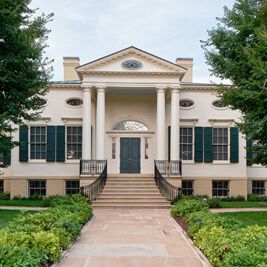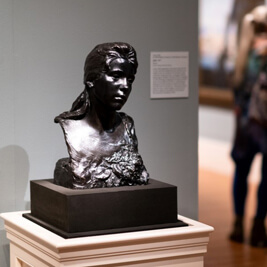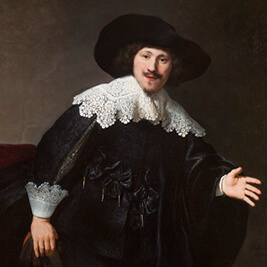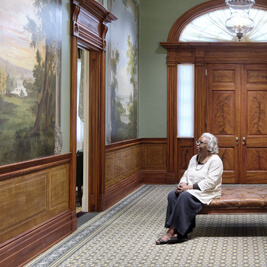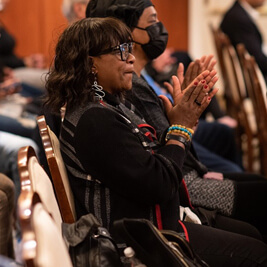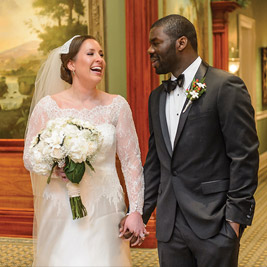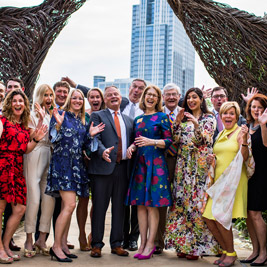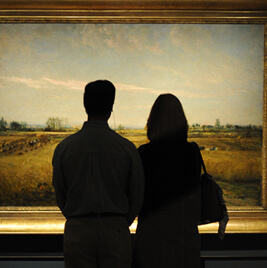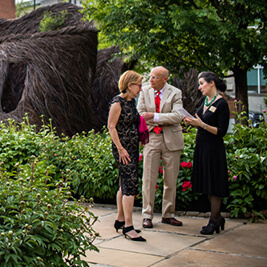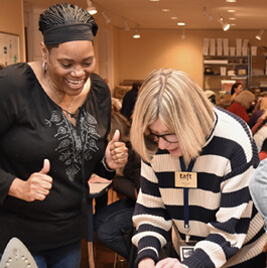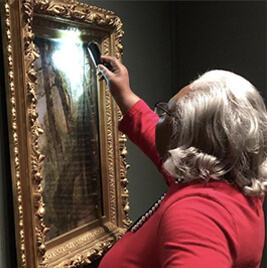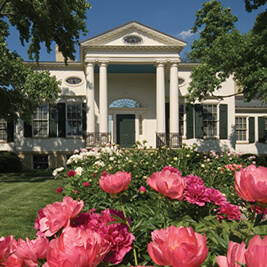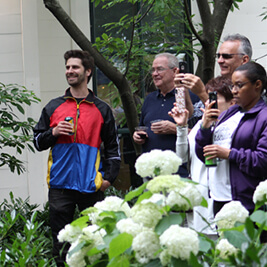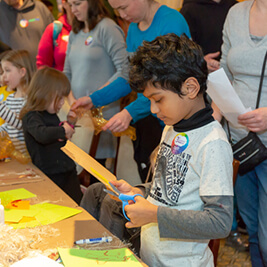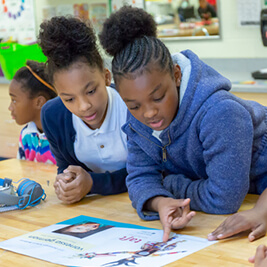- Do + See
- Dine + Host
- Give + Join
- Educate + Learn
The “Bee Hive of the Ohio Valley” | Shoemaking in Cincinnati
The Inside Story
Krohn-Fechheimer & Co., Red Cross Noiseless Shoes, Cincinnati, Ohio
Made from supple brown leather and with simple stacked heels, this unassuming pair of shoes from about 1918 provided the inspiration for this story (fig. 1). Oddly enough, of all the examples in the upcoming exhibition Walk This Way: Footwear from the Stuart Weitzman Collection of Historic Shoes, this pair particularly caught my eye, not because they were worn by a celebrity or made by a well-known designer (like many of the other shoes in the show), but because they were made in Cincinnati. Was Cincinnati known for making any other shoes in the early 20th century? Was Krohn-Fechheimer & Co. a prominent shoe manufacturer? These were my first two questions. The brand also intrigued me. Did these shoes have anything to do with the American Red Cross founded by Clara Barton in 1881? And what exactly was meant by the term “noiseless?” This modest and practical pair of shoes supports the idea that all objects tell stories, and, according to Stuart Weitzman, shoes in particular “tell an almost infinite number of stories.”1
The Best Shoes in Ohio Are Made in Cincinnati
“...Cincinnati, the Queen City of the great
West, is headquarters for quality, fit,
and style. In other words, the best shoes
in the United States are made in Ohio,
and the best shoes in Ohio are made
in Cincinnati.” 2
As it turns out, Cincinnati was one of the largest manufacturers of boots and shoes in the United States for much of the early 1900s. Factories in Boston, Lynn, and Haverhill, Massachusetts were the main centers of production, but they could not compete with Cincinnati when it came to shoe manufacturing, particularly fine women’s shoes—in this category, the Queen City took the lead. The June 1909 issue of The Cincinnati Magazine lists 24 factories (17 of which made ladies’ shoes), noting a total output of 30,000 pairs a day!3 Salesmen traveled all over the country to get Cincinnati-made footwear into various retail locations. Hedberg Brothers in Tacoma, Washington, for example, sold the Red Cross Noiseless Shoes mentioned above.
Cincinnati flourished as a shoe town for many reasons. For one, the Queen City produced much of the country’s leather. In 1886, it even claimed to have “the largest tannery in the world.”4 The railroad also made it easy for passengers and supplies alike to pass through from every direction, and manufacturers were able to snatch up inexpensive property to build factories for their growing businesses. George Stribley, often considered the pioneer of shoemaking in Cincinnati, began using machinery in the manufacturing process as early as 1852. Machines revolutionized the trade, and by the 1890s thousands of workers were employed in what had become one of the area’s leading industries.5 Pointing to the hustle and bustle of the
Queen City, the writer Bernard Bowen referred to Cincinnati as the “Bee Hive of the Ohio Valley.”6
Julian & Kokenge Company
In 1906, Cincinnati was abuzz with talk of the new factory built by Julian & Kokenge, makers of ladies’ fine shoes. Constructed at the corner of Fourth and Lawrence streets and catty-corner to Lytle Park, it was one of the most modern plants in the city.7 It also was in eyesight of what is now the Taft Museum of Art and towered over the two-story Literary Club nearby, as it still does today (fig. 2).8 A 1905 caricature illustrates that Julian & Kokenge was a big name in the business, with buyers from as far away as England, Germany, and France eager to purchase its products (fig. 3). The pairs of boots William A. Julian dangles over their heads are similar in silhouette to these high-fashion silk lace-up boots that will be on display in Walk This Way (fig. 4). Although not made by the Julian & Kokenge Co., they give us an idea of what was fashionable in the early 1900s.
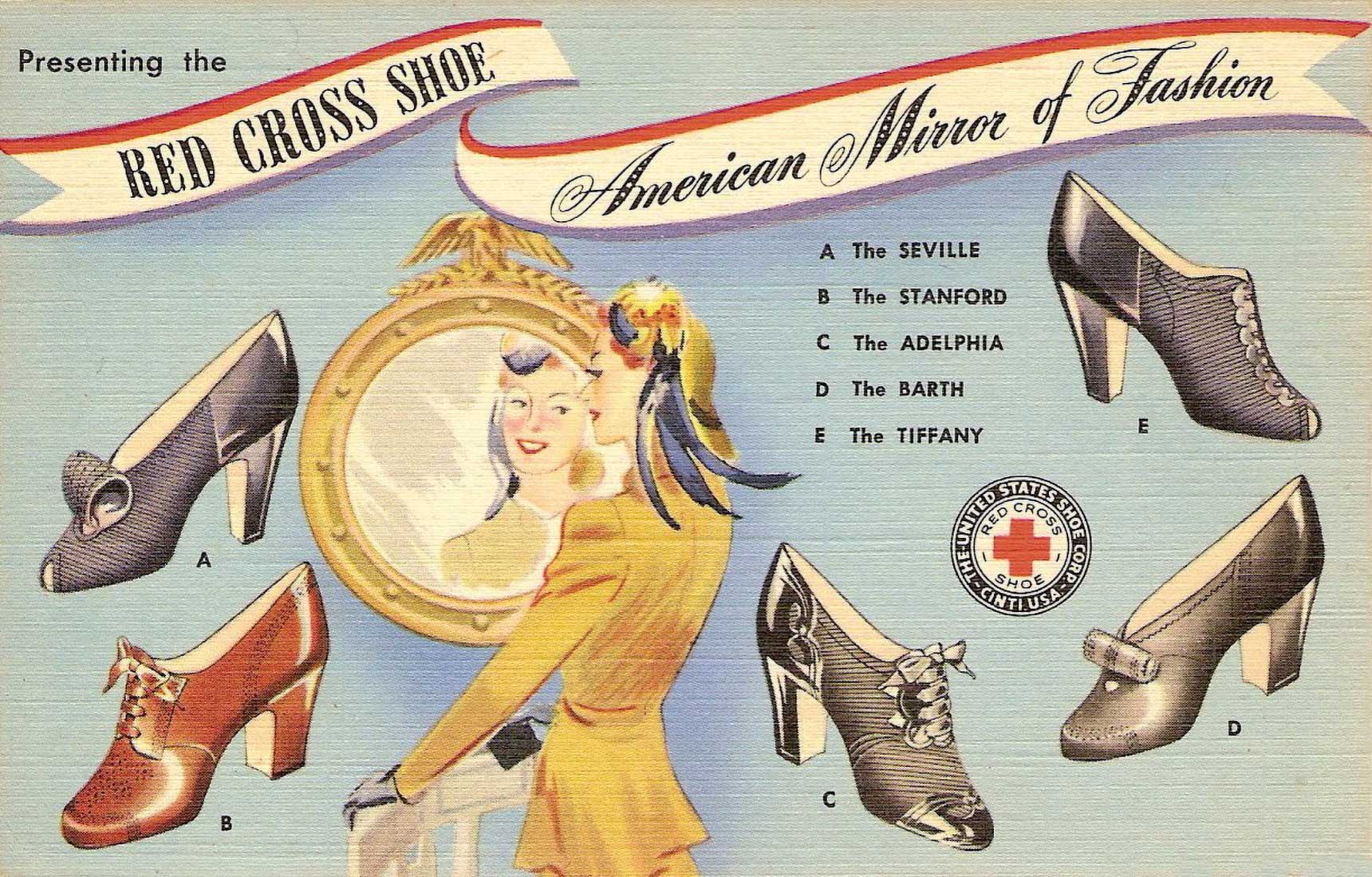
Figure 5: Presenting the Red Cross Shoe, postcard, 1942. Image from: cincinnativiews.net
Krohn-Fechheimer & Company
Like Julian & Kokenge’s footwear, Krohn-Fechheimer & Co.’s Red Cross shoes also attracted international buyers. By 1909, around 60 percent of Krohn-Fechheimer’s output consisted of this “specialty shoe for women.”9 Irwin Krohn, one of the company’s founders, ran a campaign that advertised them as the first “noiseless” shoes for women—the heels and soles made from leather so soft that they barely made a sound. By the 1940s, the Red Cross shoe (no affiliation with the American Red Cross) was the “American Mirror of Fashion,” as revealed by the slogan on this postcard (fig. 5). It also became one of the most popular brands of shoes in the United States.
Krohn-Fechheimer and Julian & Kokenge & Co., in addition to dozens of other factories, hundreds of retailers, and thousands of individuals, put the Queen City on the map as one of the country’s main centers of shoe production. Although this is no longer the case, objects like a pair of Red Cross “noiseless” shoes can create pathways of exploration that allow us to tell stories like this one—stories of Cincinnati’s rich and industrious past.
1 Stuart Weitzman, “Stand and Conquer: The Weitzman Collection of Historic Shoes,” in Walk This Way: Footwear from the Stuart Weitzman Collection of Historic Shoes (London: New-York Historical Society in association with D Giles Limited, 2018), 14.
2 “Slogan For Ohio Shoe Industry Is Buy Ohio-Made Footwear Because It Is the Best, And the Best of That Is To Be Found in Cincinnati,” Cincinnati Enquirer, February 28,
3 Bernard C. Bowen, “Cincinnati, The Great Shoe Market,” The Cincinnati Magazine 1, no. 3 (June 1909), 5.
4 Andrew Morrison, Industries of Cincinnati (Cincinnati: Metropolitan Pub. Co., 1886), 101.
5 History of Cincinnati and Hamilton County, Ohio (Cincinnati: S. B. Nelson & Co., 1894), 315–316.
6 Bowen, “Cincinnati, The Great Shoe Market,” 9.
7 The Shoe Retailer and Boots and Shoes Weekly 73, no. 2 (October 9, 1909): 47.
8 In the early 1900s, the museum’s founders, Charles and Anna Taft, were surrounded by factories, with the American Book Company to the south, the A. H. Pugh Printing Company to the north, and Julian & Kokenge some 500 feet away to the west.
9 The Shoe Retailer and Boots and Shoes Weekly 73, no. 2 (October 9, 1909): 53.
